What is a Subwoofer?
A subwoofer is a type of speaker that picks up low-frequency sounds and amplifies them so that we can hear them. It sounds that are below our hearing ability or too low for us to hear (i.e., between 20-200 Hz) become audible.
They are a great addition to your sound system, as they make you feel the bass.
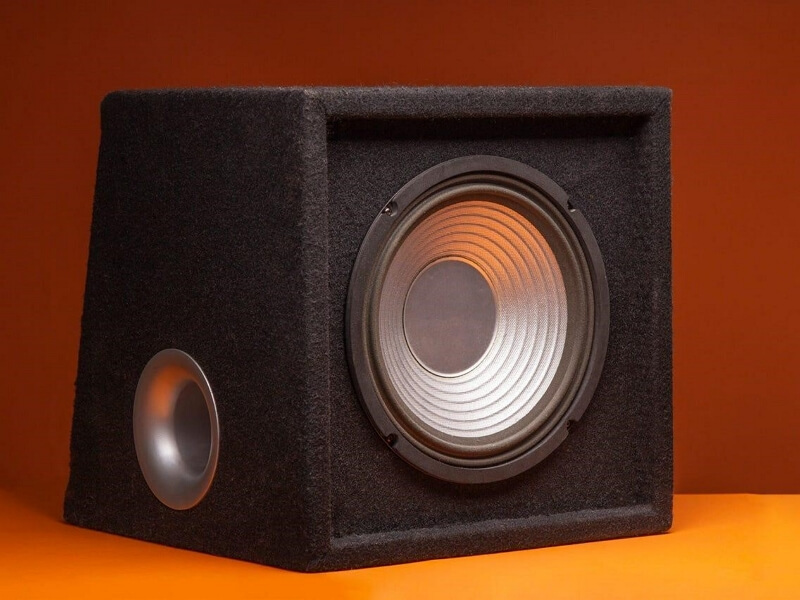
Subwoofers usually do not work alone. They are used with speakers because they only focus on the deep sounds. Other sounds, such as voices, melodies, etc., cannot be detected by the subwoofers.
Components of a Subwoofer
Subwoofers are made up of different parts and components. Following are some essential parts of a subwoofer:
- Dust Cap: A dust cap is the outermost covering of the subwoofer. Mounted over the large hole in the subwoofer keeps the parts below it safe from wear and tear.
- Speaker Cone and Surround: The next part is the speaker cone and its surround. The cone is the part of the subwoofer which creates sound waves with the help of the oscillations of the voice coil. The cone surround keeps the path of the cone linear and acts as a subwoofer’s suspension.
- Tinsel Lead: These are the leads and wires that carry current between the terminals and the voice coil.
- Spider: Spider is a layered series of wavy and corrugated pieces that attach the tinsel leads to the voice coil. It also works to maintain the linear movement of the voice coil by suspending the cone and coil.
- Voice Coil: An essential part of a subwoofer is its voice coil. It is made up of two parts: the coil and the former. The former, as the name suggests, maintains the shape and form of the voice coil. The coil is a copper or aluminum wire that is tightly wound around the former. It is essential as it creates an alternating field within the motor.
- Basket: The basket contains all the things listed above. It's a frame, but it also contributes to the sound quality due to its stiffness and non-resonance.
- Magnet: The primary driving force of a subwoofer is the large permanent magnet. Different types of magnets exist in different subwoofers. Ferrite magnets are the heaviest, and they tend to retain magnetism over time. Therefore, the subwoofers work for a more extended period.
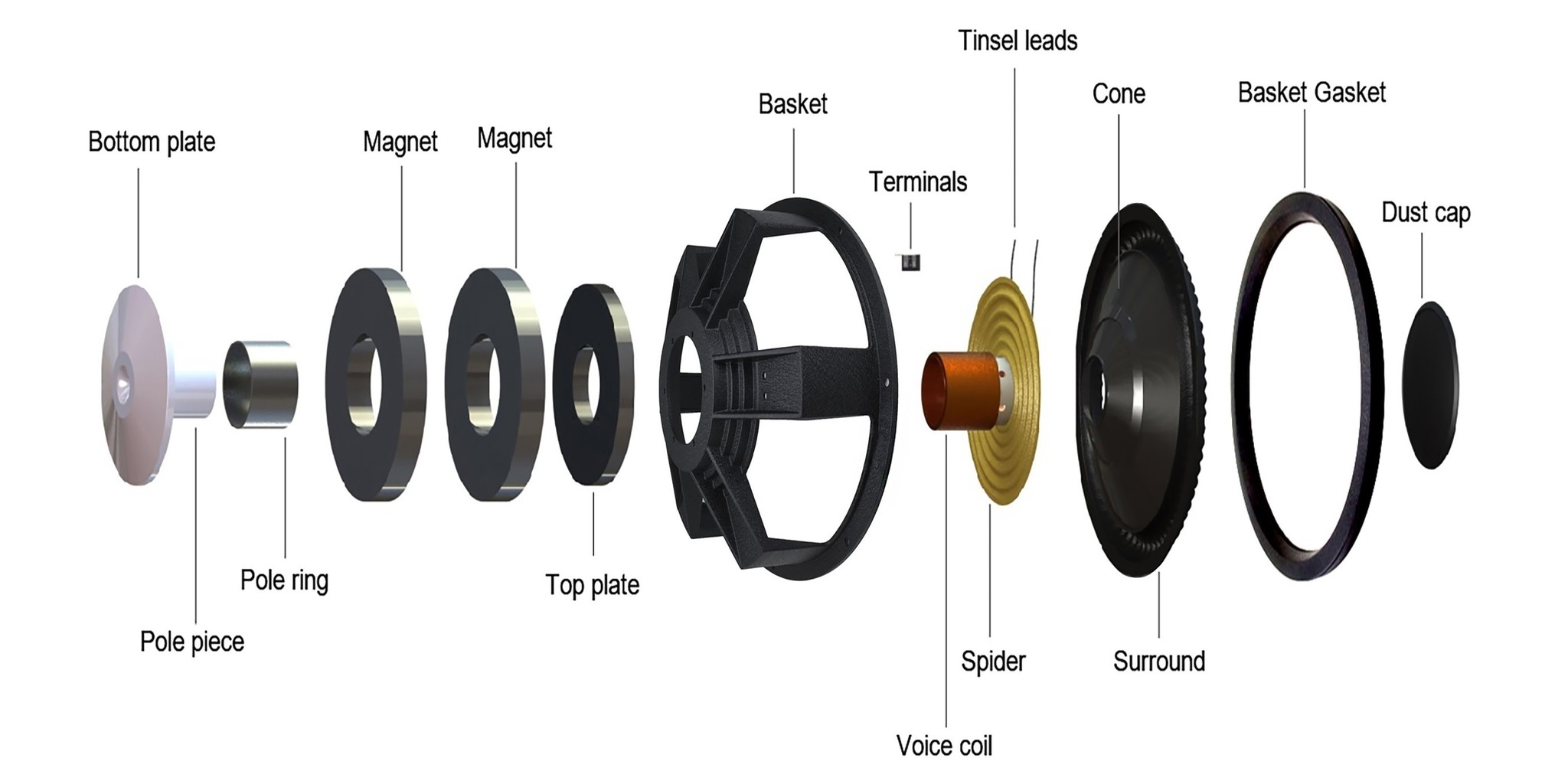
Source: www.ctsounds.com
EdrawMax
All-in-One Diagram Software
- Superior file compatibility: Import and export drawings to various file formats, such as Visio
- Cross-platform supported (Windows, Mac, Linux, Web)
AMP and SUB in a Sound System
In a sound system, subwoofers are generally referred to as "SUBS," whereas amplifiers are referred to as "AMPS." For a great bass, it is significant for your amps and subs to be evenly matched so that they work together perfectly.
How Does a Subwoofer Work?
Subwoofers are a separate entity from the sound system. When you add one to the system, you have to be careful to choose the right kind of subwoofer as per your needs. Different subwoofers have different wiring (we will explain this later on). However, generally, all subwoofers have a similar working mechanism.
Subwoofers are attached to an audio receiver to receive low-frequency signals known as low-frequency effects (LFE) on the soundtracks. The audio receiver sends the signals via an electrical current.
Upon receiving the current, the subwoofer amplifies it, and with the help of the magnetic coil that vibrates, the cone converts it into sound. The vibrations result in low-frequency sound waves that you can hear.
Wiring of a Subwoofer
Now, as mentioned above, different subwoofers are built differently. Some subwoofers have an amplifier enclosed in the box with them called a powered subwoofer. Others only have the sub within the box. Such kinds of subwoofers require you to do the wiring yourself.
There are several different types of subwoofers with different types of voice coils. Wiring is pretty simple if you're installing a single voice coil subwoofer. However, it can be a little tricky if the sub has multiple voice coils.
Single Voice Coil Drivers
Single voice coil drivers have the most uncomplicated wiring. There are two terminals on the speaker and two leads from the amplifier. All you have to do is connect the (+) of the woofers with (+) of the amplifier and similarly with the (-) connections. Even if you have up to six SVC drivers, the wiring will be the same.
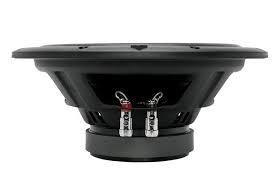
Dual Voice Coil Drivers
Dual voice coil drivers give you more flexibility and multiple wiring options.
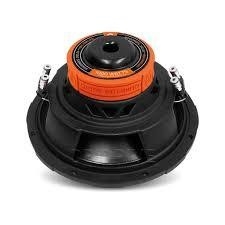
Different connections between the drivers and amplifiers will result in different impedances. So, you will have to figure out the impedance that you require and make the connections accordingly.
When wiring the drivers and the amplifier, you can make connections in series as well as parallel. However, it is vital to ensure that you make no series connection between two or more drivers. Nevertheless, series connections between voice coils on the same driver are allowed.
A few examples of different wirings of a subwoofer system are given below. Study them to get clarity.
Subwoofer Wiring Diagrams
We will explain the wiring diagrams of an SVC driver as well as a DVC driver.
Six SVC Drivers attached to an Amplifier
Given below is a wiring diagram of six SVC drivers attached to an amplifier. As the drivers have single voice coils, all of them are connected in parallel.
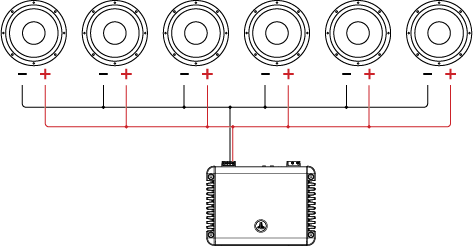
Source: jlaudio.zendesk.com
All the (+)/(-) terminals of the drivers are connected to the (+)/(-) terminals of the amp, respectively.
Two DVC Drivers attached to an Amplifier (Series/Parallel)
Here is a wiring diagram of two subwoofers with DVC drivers attached to an amplifier. The two voice coils of each driver are connected (+ to – etc.) in series, whereas the drivers themselves are connected in parallel (+ to +, etc.).
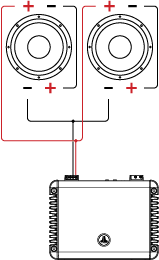
Source: jlaudio.zendesk.com
If the subwoofers are DVC-8 Ohm, then you will get an impedance of 8 ohms with this wiring. Similarly, you can get an impedance of 6 ohms, 4 ohms, 2 ohms, or 1.5 ohms with different subwoofers.
Two DVC Drivers attached to an Amplifier (Parallel/Parallel)
In this case, we again have two subwoofers and a single amplifier, but the connections are parallel. The voice coils and the drivers are all connected in parallel (+ to +, etc.).
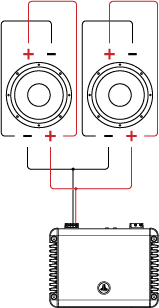
Source: jlaudio.zendesk.com
In this scenario, a DVC-8-ohm subwoofer would give an impedance of 2 ohms. Similarly, using subwoofers with different coil configurations can obtain different impedances of 1.5-ohm, 1 ohm, 0.5 ohms, or 0.38 ohm.
Use EdrawMax for Wiring Diagram Creation
Now that you know all about subwoofers and their wiring techniques, it is best to create a visual for yourself. To do this efficiently and flawlessly, go and download EdrawMax immediately.
EdrawMax provides a great variety of symbols and wiring diagram templates so that you can visualize your concept and ensure perfection.



